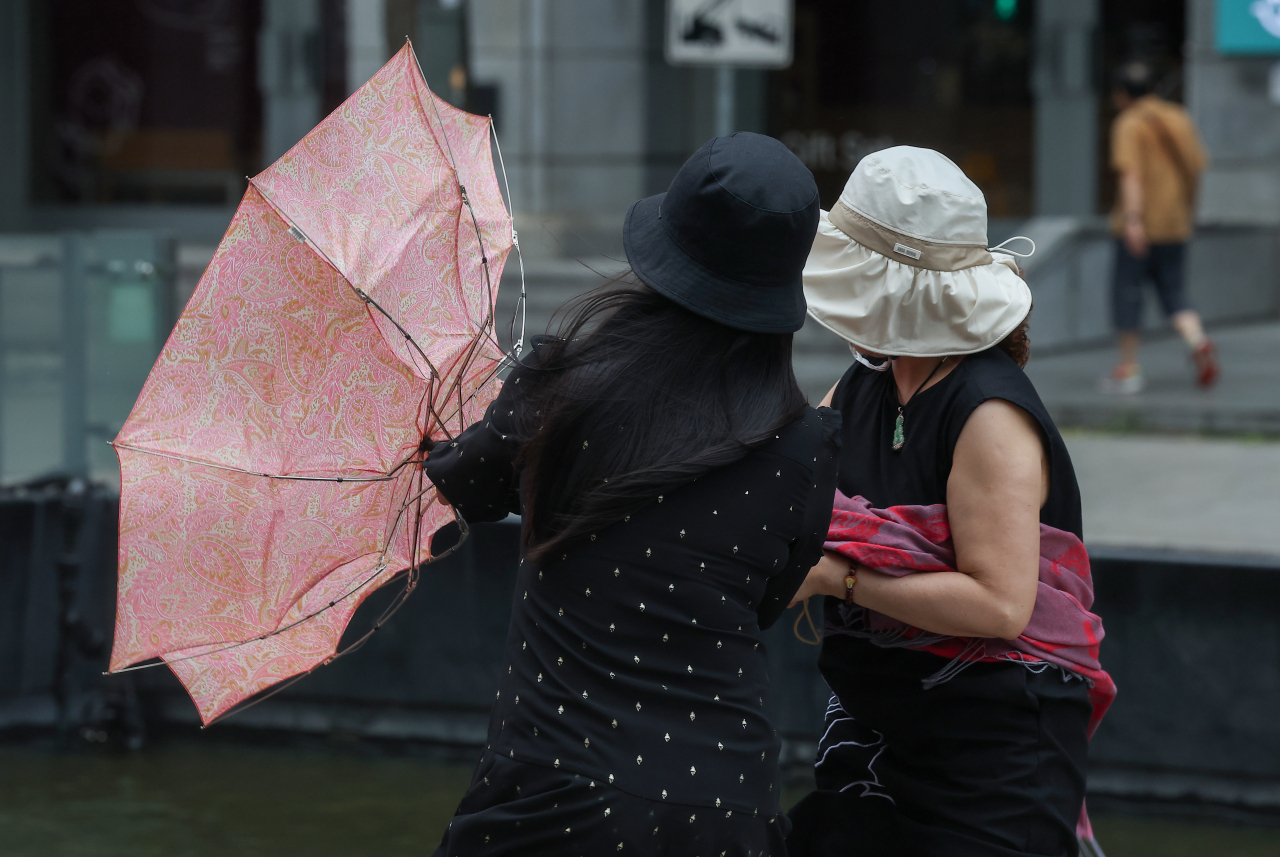 |
Tourists fix their umbrellas amid strong winds near Cheonggyecheon, in Jongno, central Seoul, Sunday. (Yonhap) |
South Korea on Sunday saw heavy rainfall across the country overnight, marking the start of the summer rain season. The government activated the first stage of the Central Disaster and Safety Countermeasures Headquarters and raised the heavy rain warning level from "concern" to "caution."
The rain front, dumping strong rain mainly in the southern part of the country, moved further inland Sunday, causing rain to fall in most parts of the country, including Seoul, according to the Korea Meteorological Administration.
The rain is expected to continue in the North and South Chungcheong provinces, southern regions and Jeju Island through Tuesday, affected by the stagnant front. The rain is to expand to other inland areas by Wednesday, and be concentrated in the central region, the North and South Jeolla provinces and North Gyeongsang Province on Thursday.
Heavy rainfall and strong winds halted flights, closed down seven trails on Hallasan and flooded 32 houses, stores, roads and basement parking lots on Jeju Island on Sunday. At Jeju International Airport, 18 flights to and from the island were canceled due to bad weather conditions at other airports, including Gimhae International Airport in Busan, while some 12 others were delayed Sunday.
Authorities also canceled operations of passenger ferries connecting Jeju Island to Wando, South Jeolla Province, for Sunday, due to heavy monsoon rain expected in the area.
Access to 20 national parks across the country has been restricted and 689 locations, including parking lots along rivers and roads and underpasses in local governments, were off-limits as of Sunday afternoon.
The central government has instructed local governments to evacuate vulnerable people living in semiunderground housing in advance in cooperation with evacuation helpers. The state also urged them to preemptively check and control areas with a risk of collapse, such as mountains and steep slopes.
Minister of the Interior and Safety Lee Sang-min urged people to check real-time weather conditions on TV and radio and refrain from traveling to dangerous locations such as valleys and low-lying areas.
As the stagnant front is expected to move repeatedly north to south and vice versa, the weather agency has forecast rain across the country until July 10 in its medium-term forecast period.
Midterm forecasts are inherently volatile, and the location and phase of the stagnant front may change significantly depending on the expansion of the North Pacific high-pressure system.







![[Today’s K-pop] Blackpink’s Jennie, Lisa invited to Coachella as solo acts](http://res.heraldm.com/phpwas/restmb_idxmake.php?idx=644&simg=/content/image/2024/11/21/20241121050099_0.jpg)